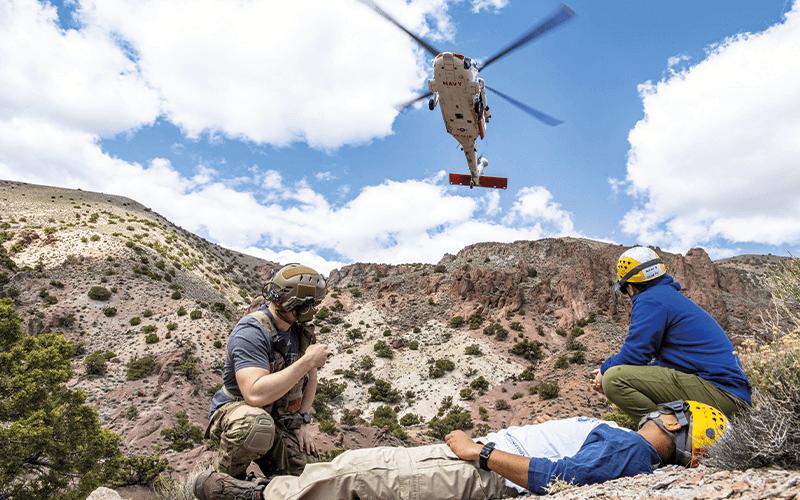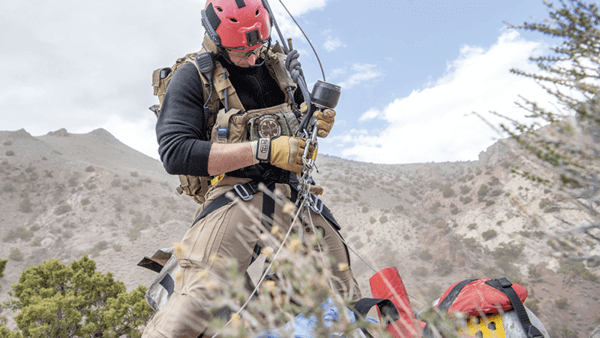Gallery: Longhorns on a SAR training exercise

Based out of Naval Air Station Fallon, Petty Officer 2nd Class Ryan Breeden captured images of a simulated accident and rescue of an injured person in the Nevada desert by the Longhorns SAR squadron
Naval Air Station (NAS) Fallon is the United States Navy’s air-to-air and air-to-ground training facility. Located southeast of the city of Fallon, east of Reno in western Nevada, it’s perhaps most famous as the site of the Naval fast jet ‘Top Gun’ Strike Fighter Tactics Instructor program.
US Navy helicopter search and rescue (SAR) squadrons have a primary mission to provide SAR and first responder support for naval fleet flight training operations. For their secondary mission, SAR squadrons also work closely with local agencies to be a first responder to anyone in danger, with a maximum standby of 60 minutes seven days a week, but often with a readiness of 15 minutes. Further to their core responsibilities, SAR squadrons are also involved in missions that include aerial firefighting and other general utility helicopter operations.
The Longhorns squadron was closed down and assets and personnel were transferred or reassigned in mid-2022. There are still several bases for dedicated SAR squadrons across the USA, and other naval squadrons also assume some SAR responsibilities. Of the three MH-60S Knighthawk helicopters from the Longhorns, two were reassigned to the Naval Aviation Warfighting Development Center (NAWDC) and the third went to a helicopter squadron in San Diego.
The Sikorsky MH-60S Knighthawk was introduced in 2002 to replace the CH-46D. It is based on the UH-60L Black Hawk airframe with naval adaptations from the SH-60B Seahawk to make it more suited for marine environments, such as the rescue hoist for SAR missions and the naval cockpit doors.
The appearance of US Department of Defense (DoD) visual information does not imply or constitute DoD endorsement.

May 2024
Issue
In our special training edition for May, find out how operators of all sizes are using new tools and equipment to train their pilots; discover what is the latest in technology for training hoist and winch operators; learn how air medical crew remain current and up to date with the latest techniques and procedures; and find out what goes into the essential medical kit bags that are carried into the skies; plus more of our regular content.
Jon Adams
Jon is the Senior Editor of AirMed&Rescue. He was previously Editor for Clinical Medicine and Future Healthcare Journal at the Royal College of Physicians before coming to AirMed&Rescue in November 2022. His favorite helicopter is the Army Air Corps Lynx that he saw his father fly while growing up on Army bases.








